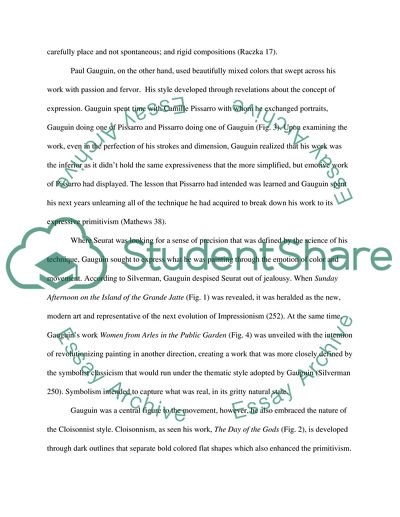Cite this document
(“Comparison Analysis Of George Seurat, Sunday Afternoon On The Island Essay”, n.d.)
Comparison Analysis Of George Seurat, Sunday Afternoon On The Island Essay. Retrieved from https://studentshare.org/visual-arts-film-studies/1572241-comparison-analysis-of-george-seurat-sunday-afternoon-on-the-island-of-the-grande-jatte-1886-and-paul-gauguin-the-day-of-the-gods-1894
Comparison Analysis Of George Seurat, Sunday Afternoon On The Island Essay. Retrieved from https://studentshare.org/visual-arts-film-studies/1572241-comparison-analysis-of-george-seurat-sunday-afternoon-on-the-island-of-the-grande-jatte-1886-and-paul-gauguin-the-day-of-the-gods-1894
(Comparison Analysis Of George Seurat, Sunday Afternoon On The Island Essay)
Comparison Analysis Of George Seurat, Sunday Afternoon On The Island Essay. https://studentshare.org/visual-arts-film-studies/1572241-comparison-analysis-of-george-seurat-sunday-afternoon-on-the-island-of-the-grande-jatte-1886-and-paul-gauguin-the-day-of-the-gods-1894.
Comparison Analysis Of George Seurat, Sunday Afternoon On The Island Essay. https://studentshare.org/visual-arts-film-studies/1572241-comparison-analysis-of-george-seurat-sunday-afternoon-on-the-island-of-the-grande-jatte-1886-and-paul-gauguin-the-day-of-the-gods-1894.
“Comparison Analysis Of George Seurat, Sunday Afternoon On The Island Essay”, n.d. https://studentshare.org/visual-arts-film-studies/1572241-comparison-analysis-of-george-seurat-sunday-afternoon-on-the-island-of-the-grande-jatte-1886-and-paul-gauguin-the-day-of-the-gods-1894.


